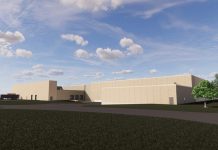The COVID-19 pandemic has been miserable by any stretch of the imagination. But there have been some silver linings.
The pandemic accelerated technological changes at a rate never seen before, and there’s no putting that genie back in the bottle.
For example, McKinsey & Company opined, “We have vaulted five years forward in consumer and business digital adoption in a matter of around eight weeks.”
And Microsoft’s CEO Satya Nadella said, “We’ve seen two years’ worth of digital transformation in two months.”
What will be the long-term impact?
Todd McLees, a well-respected innovation strategist who focuses on the future of work, has identified major transformations that were compressed into 10 months, which might’ve taken 10 years to become a full reality. Some of those include:
- Remote work. In one survey, employees were asked if they would prefer a $30,000 raise or the opportunity to work remotely and opted for remote work.
- E-commerce. Consumers purchased almost 14% of all products online last year, which is a historical record, and that trend shows no sign of returning to lower numbers.
- Artificial Intelligence. The pandemic forced businesses to accelerate augmenting human intelligence with artificial intelligence that included better speech recognition, improved medical diagnoses, autonomous vehicles, and the ability to see patterns in research.
- Videoconferencing/virtual collaboration. What was a small fraction of all meetings in the United States has become a predominant form of interaction. Clearly, it will subside somewhat as people return to offices, but it will never return to pre-2020 levels.
- Robotic process and automation. By 2025, the time spent on tasks at work by humans and machines will be equal. By 2030, as many as 800 million people globally could be displaced by the adoption of automation, and 375 million will likely need to change their occupation. Seventy-five million U.S. workers will require retraining.
- Telemedicine. Several studies show that telemedicine, especially psychiatry, is up over 300% during the pandemic with no signs of abating. Regular health care has been impacted dramatically by virtual visits and engagements for website communication with primary care physicians and specialists.
- Entertainment industry. Ask yourself how dramatically your habits have changed in watching movies and other entertainment offerings during the pandemic. There’s a reason Netflix stock has exploded in value.
- Employment tenure. Gen Z employees entering the workforce today will average 17 jobs in five industries. Sixty-five percent of today’s young learners will have a job that has not been invented yet.
So, what does it take for an employer or leader to survive this dramatic transformation and acceleration of technology?
First and foremost, employers need to recognize that their workforce and the average employee will require skills historically reserved for management. That includes the ability to be continually flexible, have an adaptive learning mindset, demonstrate personal creativity, interact well with fellow employees, virtually or otherwise, and most importantly, exhibit “disciplined curiosity” about everything on the radar of their companies.
I highly recommend a “boot camp” approach to onboarding new employees that would include intense training on creativity and corporate innovation tools. Unless employees are using the same playbook to drive improvements in their organization, chaos will result.
There needs to be dedicated points in which employees are encouraged to refresh their skills and learn new skills because of the degree of transformation going on in the workplace.
Lastly, a lot of money is wasted on new product initiatives or services that cost the company money. Curtis Carlson, the CEO of Practice of Innovation, a Silicon Valley consulting company, wrote in the Harvard Business Review this year that companies need to have a more disciplined approach to innovation by training employees to present solutions to customer challenges through almost jury-type formats, in which experts and fellow employees react to their ideas before a significant amount of money is spent on any given project.
That final thought should help guide dramatic experimentation with new technology for your organization as it experiments with new innovation and pivots continually to see what works.
![accelerator-shutterstock_62418685-[Converted]](https://assets.biztimes.com/2021/09/accelerator-shutterstock_62418685-Converted-1068x601.jpg)






